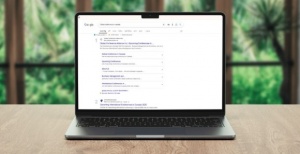Canada hosts a variety of conferences throughout the year, covering topics from technology and science to arts and business. With so many events happening, it’s no wonder people often wonder how to find conferences to attend in Canada.
Find conferences in Canada by using event platforms like Global Conference Alliance, checking university listings, and exploring professional associations. Social media groups, government websites, and newsletters also provide valuable leads. Searching online and using mobile apps ensures you stay updated on upcoming events.
If you’re interested in learning more, keep reading. This article provides all the details you need to find the best conferences in Canada, helping you uncover events that align with your interests and aspirations.
How to Find Conferences to Attend in Canada? Top Resources
Finding the right conferences can feel difficult, but it’s worth the effort. With the wealth of events taking place each year, Canada offers plenty of opportunities to connect with like-minded individuals. Keep reading to learn how to identify worthwhile gatherings.

Online Event Platforms
Websites like Global Conference Alliance list various conferences happening throughout Canada. These platforms allow you to filter events based on location, date, and category. Many conferences also offer early registration discounts, so checking frequently can be helpful. Signing up for event notifications ensures you don’t miss out on anything. A simple search on these platforms can lead to valuable learning and networking opportunities.
University and College Listings
Many academic institutions host conferences on diverse topics, including science, business, and social issues. Their websites often have a dedicated events section where upcoming gatherings are listed. Some universities even allow non-students to attend. Checking faculty pages and student organizations can also reveal valuable event details. If you’re interested in academic discussions, this is a great way to find relevant conferences.
Professional Associations
Industry groups and professional organizations regularly hold conferences related to specific fields. Membership websites often include exclusive access to event calendars. Even if you’re not a member, many associations publish public event details. These gatherings are great for meeting experts and staying updated on industry trends. Following association newsletters can also provide early access to important conference dates.
Social Media Groups
Platforms like LinkedIn, Facebook, and Twitter are filled with event promotions. Many organizers create groups or pages to share updates about their conferences. Joining industry-specific communities can help you discover new opportunities. Event hashtags on social media can also lead you to upcoming discussions. Engaging with these posts keeps you informed and connected with potential attendees.
Government and Corporate Websites
Large corporations and government organizations regularly hold conferences, particularly in fields like education, healthcare, and technology. Checking their official websites can reveal events that aren’t widely advertised. Some organizations also sponsor free or discounted entry for students. Public institutions often list events that align with national interests. Exploring these sources ensures you don’t overlook important gatherings.
Email Newsletters
Many event organizers and industry leaders share conference details through newsletters. Subscribing to event-related emails keeps you updated without having to search manually. Some newsletters provide exclusive discount codes for attendees. Reading through weekly or monthly updates can help you plan in advance. This is an easy way to stay informed without missing out on key events.
Word of Mouth
Friends, professors, and colleagues can be great sources of conference information. Many people hear about events through personal connections before they are widely advertised. Asking around can uncover unique opportunities suited to your interests. Sometimes, recommendations come with personal insights about which conferences are worth attending. Keeping in touch with those in your field can lead to valuable suggestions.
Search Engines
A simple Google search can lead to thousands of results on upcoming conferences in Canada. Typing in specific keywords, like your field of interest and location, refines the search. Many websites organize conference listings in one place, making it easier to browse. Checking multiple sources ensures you get a complete picture of what’s available. This method works well when combined with other approaches.
Mobile Apps
Many conference organizers have apps where users can browse events, register, and even connect with attendees. These apps provide real-time updates on event schedules and speakers. Some apps also allow virtual attendance for those who can’t travel. Downloading these apps keeps everything in one place for easier access. This is a convenient way to stay organized when planning to attend a conference.
You can learn new things and form valuable relationships by going to conferences. With so many ways to find them, there’s always something happening nearby. Stay curious, explore different options, and start planning your next event.
How Do Filters Help in Searching for Relevant Conferences in Canada?
Finding the right conferences in Canada can take time, especially with so many options available. It can be difficult to filter through countless lists of events, making it challenging to find those that interest you. That’s where search filters can make things easier. Let’s explore how they help narrow down the best conferences for you.
Location-Based Search
Finding conferences close to you saves time and travel costs. Most platforms allow you to search by city, province, or even specific venues. This is especially useful if you’re looking for local events or want to attend something nearby. Some filters even let you explore hybrid or virtual options if travel isn’t possible. Setting location preferences ensures you only see events that fit your accessibility needs.
Date and Time Filters
Choosing the right date helps in planning ahead without scheduling conflicts. Conference websites often provide filters that let you pick specific days, months, or weekends. This makes it easier to fit events into your academic or work schedule. Some platforms even highlight early registration deadlines or discounted tickets. Sorting by date ensures you never miss out on events that align with your availability.
Category and Industry Selection
You will gain relevant insights if you attend the right type of conference. Event platforms let you filter by industry, whether it’s business, technology, health, or the arts. This helps in avoiding unrelated events and focusing on ones that match your interests. Some platforms also suggest trending conferences within your chosen category. Using these filters makes it easier to find events that add real value to your learning.
Ticket Price and Access
Managing expenses is important when selecting conferences to attend. Many websites let you filter events by ticket price, showing only free, discounted, or paid options. This helps in finding budget-friendly choices without wasting time on unaffordable events. Some filters also highlight early-bird offers and student discounts. Searching by price ensures you don’t miss valuable events that fit within your budget.
Speaker and Topic Preferences
Learning from the right speakers can make a conference more worthwhile. Some websites allow filtering by keynote speakers or panel topics, helping you find events featuring experts in your field. This is useful if you’re looking to hear from specific industry leaders or researchers. Platforms may also rank events based on speaker reputation or audience engagement. Choosing filters based on speakers or topics ensures you attend conferences that truly interest you.
Sorting through conference listings becomes much easier when you know how to use search filters effectively. With options to refine results by location, date, category, price, and speakers, finding the right event takes less effort. Take advantage of these tools to discover conferences that match your interests.
Is Networking Useful for Finding New Conferences in Canada?
It is not always easy to find upcoming conferences in Canada. Many events are shared within professional circles before they become widely advertised. Talking to the right people can introduce you to opportunities you might not find elsewhere. Let’s look at how networking can help uncover new conferences.
Conversations With Peers
Talking to classmates, colleagues, or friends often leads to great recommendations. Many people learn about conferences through word of mouth before they appear online. Asking about past events can also help you decide which ones are worth attending. Discussions with those in your field often bring up conferences that align with your interests. Keeping an open conversation about events can lead to valuable insights.
Industry Events and Meetups
Smaller events can lead to larger ones. Many local meetups, seminars, or panel discussions feature speakers who mention upcoming conferences. Networking with professionals in these settings often leads to exclusive event invitations. Some conferences are only advertised within certain industry circles, making in-person connections even more valuable. Engaging in discussions at these events increases your chances of hearing about new opportunities.
Online Networking Platforms
You can find relevant conferences by making online connections with professionals. LinkedIn groups, Facebook communities, and even Twitter discussions often highlight upcoming events. Many industry leaders share event recommendations or post about conferences they are attending. Engaging with these posts keeps you updated without needing to search constantly. Following key people in your field can bring new conference opportunities straight to your feed.
Professional Associations and Organizations
Membership in industry groups often comes with access to event listings. Many associations host their own conferences or partner with others to promote important gatherings. Subscribing to newsletters or attending association meetings can keep you informed about exclusive events. Even non-members can check association websites for public event announcements. Staying connected with these organizations helps in discovering conferences tailored to your interests.
Referrals from Professors and Mentors
Academic mentors and professors are often well-informed about industry conferences. Many are invited as speakers or have colleagues who organize events. Asking for recommendations can lead to valuable suggestions, especially for academic or research-based conferences. Some professors even receive discount codes or free passes for students interested in attending. Keeping in touch with mentors ensures you don’t miss out on key learning opportunities.
Networking makes it easier to find conferences that align with your interests and goals. By talking to peers, attending industry events, and connecting online, you can discover valuable gatherings beyond what’s listed on public platforms. Stay engaged, ask around, and keep an eye on conversations—it could lead you to your next great event.
Which Social Media Platforms Regularly Promote Upcoming Conferences in Canada?
Finding upcoming conferences in Canada isn’t just about searching websites. Many events are promoted on social media, where organizers and attendees share updates in real time. Knowing where to look can make it easier to discover relevant gatherings. Here’s where to start:
- LinkedIn: Industry leaders and organizations regularly post about upcoming conferences, making it a great place to find events related to specific fields or interests.
- Facebook: Many conferences have dedicated event pages or private groups where organizers share schedules, speaker details, and ticket information for potential attendees.
- Twitter (X): Event organizers use hashtags and live updates to promote conferences, while attendees often share insights, making it a useful platform for staying informed.
- Instagram: Stories and posts from organizers, speakers, and attendees provide event highlights, registration links, and behind-the-scenes glimpses of upcoming conferences.
- Reddit: Community forums discuss different conferences, allowing people to ask for recommendations, share past experiences, and find niche events that aren’t widely advertised.
- YouTube: Conference organizers and speakers upload promotional videos, past event highlights, and detailed insights that help in deciding which events are worth attending.
Social media makes it easier to find and track upcoming conferences in Canada. By following event organizers, joining relevant groups, and engaging in discussions, you can stay updated on important gatherings. Start exploring these platforms to find your next event.
How Can Google Searches Help in Finding Canadian Conferences?
Searching for conferences in Canada can feel challenging with so many options available. While many people rely on recommendations or social media, search engines provide a direct way to explore upcoming events. The right approach can save time and bring better results. Let’s see how Google searches can help you find relevant conferences easily.

Keyword Variations
Typing broad terms may bring too many unrelated results, making it harder to find useful events. Using specific words like industry names, locations, or event types improves search accuracy. Trying different keyword combinations can help uncover hidden conferences that aren’t widely advertised. Some websites also use slightly different terms, so experimenting with search variations increases your chances of finding the right event. Refining your keywords ensures you get the most relevant results.
Advanced Search Operators
Using Google’s special commands can make searches more precise and effective. Quotation marks around phrases help find exact matches, while minus signs exclude unwanted results. The “site:” operator helps search within specific websites, like university pages or event platforms. Other commands like “intitle:” or “inurl:” refine searches by focusing on conference listings. Learning these simple tricks makes searching for events faster and more efficient.
Google Alerts Setup
Manually searching every time for conferences can be time-consuming and repetitive. Google Alerts helps by automatically sending notifications when new events match your selected keywords. Customizing alerts by choosing frequency, language, and region makes them more useful. These alerts can track event announcements and early registration details. Setting them up once keeps you informed without the need for constant searching.
Event-Specific Search Tabs
Many people only use Google’s main search, but its specialized tabs offer additional event details. Switching to the “News” tab helps find the latest conference announcements covered in articles. The “Images” section can lead to posters or banners that include event information. Even the “Videos” tab sometimes showcases promotional content from organizers or past attendees. Exploring different tabs provides extra ways to find conference details.
Localized Search Results
Regional relevance may cause different conference results when searching from different locations. Enabling location services or adding specific city names refines searches for nearby events. Google’s “Maps” feature can also reveal venues that regularly host conferences, leading to their official pages. Changing search settings to focus on Canadian results prevents unrelated international listings. Adjusting these preferences ensures you get location-specific event recommendations.
Using the appropriate Google search strategies makes finding the right conferences much simpler. Using keyword variations, search operators, alerts, and specialized search tabs can bring better results. Start refining your searches and take advantage of these tools to discover valuable events.
End Note
Learning, growing, and connecting with professionals in your field is a great benefit of attending conferences. With so many options available, knowing where to look makes the search much easier. Whether through online platforms, networking, or search engines, there are plenty of ways to discover relevant events. Are you still wondering how to find conferences to attend in Canada? The best approach is to explore event websites, check academic and professional listings, follow social media updates, and use Google effectively to find the right gatherings.
Before choosing a conference, consider the event’s relevance, schedule, and cost to ensure it meets your needs. Staying updated through newsletters and alerts can also help you plan ahead. Take advantage of available resources, explore different options, and make the most of every opportunity. Wishing you the best in finding the perfect conference that matches your interests!





